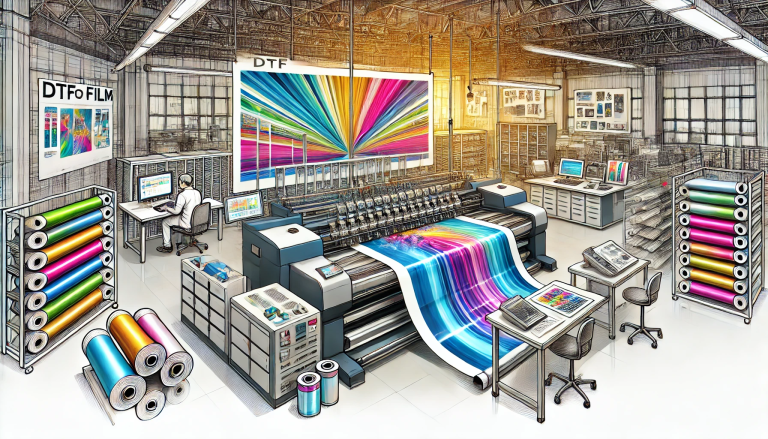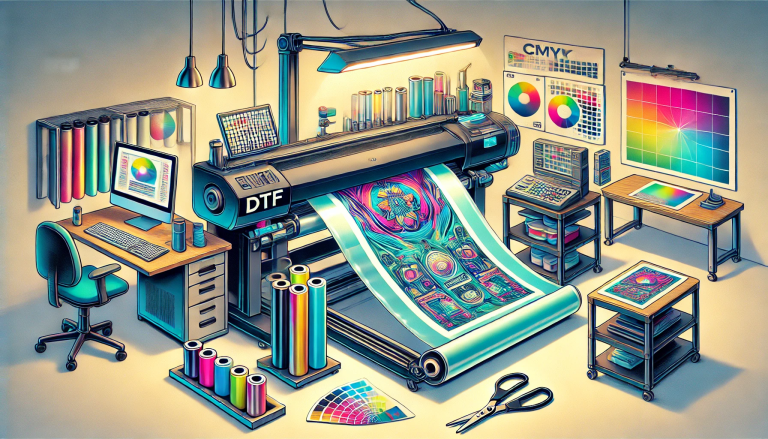“The Comprehensive Guide to Using Deco Foil Transfer Sheets” -MAXDTF- DTF Film Glossy Manufacturer, impresora DTF PET Film Transfer Supplier, Made in China
Deco foil transfer sheets have revolutionized the art of embellishment, offering a simple yet elegant way to add metallic and holographic finishes to a wide range of surfaces. Whether you’re a professional crafter, a small business owner, or a hobbyist looking to add a touch of sophistication to your projects, deco foil transfer sheets are a versatile and cost-effective solution. In this comprehensive guide, we’ll walk you through everything you need to know about using deco foil transfer sheets, including how they work, the tools you’ll need, and step-by-step instructions for achieving professional-quality results.
What Are Deco Foil Transfer Sheets?
Deco foil transfer sheets are thin, pre-printed sheets that contain adhesive-backed metallic or holographic designs. These sheets come in a variety of colors, patterns, and finishes, ranging from classic gold and silver to vibrant rainbow holographic effects. The adhesive layer is activated by heat, allowing the foil design to transfer onto a surface such as paper, fabric, wood, or ceramics.
How Do Deco Foil Transfer Sheets Work?
The process of using deco foil transfer sheets involves three key steps: printing, application, and heat transfer.
- Printing: The design or text you want to transfer is printed onto the deco foil sheet using a specialized printer or by cutting the sheet with a die-cutting machine. The foil layer adheres to the adhesive backing, creating a ready-to-transfer design.
- Application: The printed foil sheet is placed onto the surface you want to decorate, with the foil side facing up. This step is crucial for ensuring proper alignment and coverage.
- Heat Transfer: A heat press or a household iron is used to apply heat and pressure to the foil sheet. The heat activates the adhesive, causing the foil design to transfer onto the surface.
Tools and Materials You’ll Need
To successfully use deco foil transfer sheets, you’ll need a few essential tools and materials:
- Deco Foil Transfer Sheets: Choose a variety of colors and patterns to suit your project. Look for high-quality sheets from reputable brands to ensure vibrant, long-lasting results.
- Printer or Die-Cutting Machine: If you’re printing your own designs, you’ll need a printer compatible with foil transfer sheets. Alternatively, a die-cutting machine can be used to cut custom shapes and designs directly from the sheet.
- Heat Press or Iron: A heat press is ideal for professional results, but a household iron can also work for smaller projects. Make sure your iron is set to the appropriate temperature for the type of foil you’re using.
- Surface to Decorate: Deco foil transfer sheets can be used on a wide range of surfaces, including paper, fabric, wood, ceramics, and more. Choose a surface that is clean, dry, and free of dust or oils.
- Blade or Scissors: For trimming excess foil or cutting custom shapes, a sharp blade or pair of scissors is essential.
- Lint-Free Cloth: A clean, lint-free cloth can be used to smooth out the foil during the transfer process and remove any bubbles or wrinkles.
Step-by-Step Guide to Using Deco Foil Transfer Sheets
Follow these detailed steps to achieve stunning results with your deco foil transfer sheets:
1. Prepare Your Surface:
Start by ensuring that the surface you want to decorate is clean, dry, and free of dust or oils. This will help the foil adhere properly and ensure a smooth transfer.
2. Print or Cut Your Design:
If you’re printing your own design, use a printer compatible with foil transfer sheets. Print your design onto the foil sheet, making sure to mirror the image if necessary. Alternatively, if you’re using a die-cutting machine, cut your design directly from the foil sheet.
3. Apply the Foil Sheet:
Place the printed or cut foil sheet onto the surface you want to decorate, with the foil side facing up. Make sure the sheet is positioned correctly and aligned with your project.
4. Apply Heat and Pressure:
Use a heat press or an iron to apply heat and pressure to the foil sheet. If using an iron, set it to a medium-high temperature and ensure it is set to dry heat (no steam). Press down firmly on the foil sheet, moving the iron or heat press in a smooth, even motion.
- For a Heat Press: Preheat the press to the recommended temperature for your foil type (usually between 300°F and 320°F / 150°C and 160°C). Place the foil sheet onto the surface, then cover it with a Teflon sheet or silicone pad to protect the press. Apply pressure for about 10-20 seconds, depending on the size of the design.
- For an Iron: Preheat the iron to the recommended temperature and press it firmly onto the foil sheet. Move the iron in a circular motion to ensure even heat distribution. Apply pressure for about 10-20 seconds per section, depending on the size of the design.
5. Remove the Backing:
Once the foil has transferred, carefully peel away the backing paper. If any part of the foil hasn’t transferred properly, simply reapply heat and pressure to that area.
6. Trim the Foil:
Use a blade or scissors to trim away any excess foil around the edges of your design. This will give your project a clean, professional look.
7. Finishing Touches:
Allow your project to cool completely before handling. If necessary, seal the foil with a clear coat of spray varnish or adhesive to protect it from wear and tear.
Tips for Success
- Test Before Use: Always test your deco foil transfer sheets on a scrap piece of material to ensure the heat and pressure settings are correct.
- Use a Protective Sheet: When using an iron, place a protective sheet (such as parchment paper or a Teflon sheet) between the iron and the foil to prevent the iron from sticking and to protect the foil.
- Work in Small Sections: If you’re transferring a large design, work in small sections to ensure even heat distribution and prevent the foil from cooling before the transfer is complete.
- Be Patient: Allow the foil to cool completely before peeling away the backing paper. If the foil feels tacky, it’s not ready to be removed.
Applications for Deco Foil Transfer Sheets
Deco foil transfer sheets are incredibly versatile and can be used in a wide range of applications:
- Crafting: Add metallic or holographic accents to cards, scrapbooks, and other paper crafts.
- Home Décor: Decorate ceramics, glassware, wood, and textiles with foil transfers for a luxurious look.
- Apparel: Transfer foil designs onto t-shirts, tote bags, and other fabric items for a custom, high-end finish.
- Stationery: Create personalized invitations, notebooks, and gift tags with foil embellishments.
- Wedding and Event Decor: Use foil transfers to add a touch of elegance to wedding favors, table settings, and more.
Conclusion
Deco foil transfer sheets are a fantastic tool for anyone looking to add a touch of luxury and sophistication to their projects. With a little practice and the right tools, you can create stunning, professional-quality designs on a wide range of materials. Whether you’re crafting at home, running a small business, or exploring a new hobby, deco foil transfer sheets offer endless possibilities for creativity and customization.
By following this comprehensive guide, you’ll be well-equipped to master the art of foil transferring and take your projects to the next level. So, grab your deco foil transfer sheets, gather your tools, and start creating!





